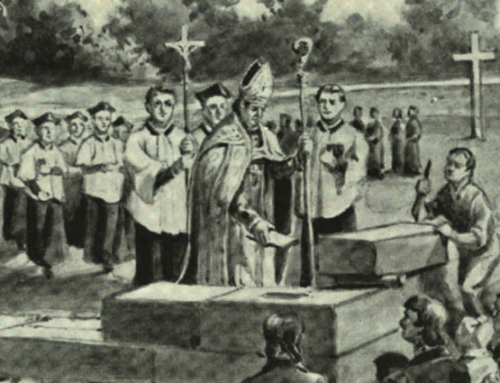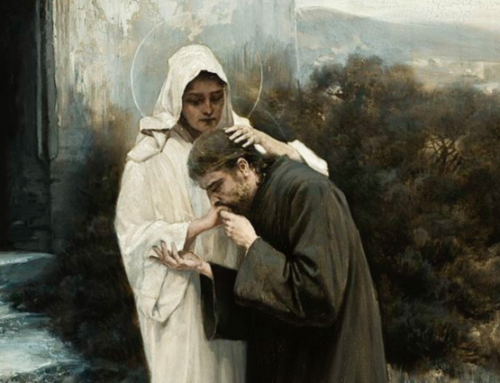“Carmina Burana” continues to fill seats in concert halls, to echo in the minds of those who revel in its catchy tunes and intoxicating rhythms, and perhaps to entertain even prudish among us, who discreetly savor in secret this pagan cantata’s celebration of the taboo joys of the flesh.
 When determining their programming for the upcoming season, orchestras are wise to choose at least a few classical works that are sure-fire money-makers: “War-horses” like Mussorgsky’s Pictures at an Exhibition, as G.F. Handel’s Messiah, P.I. Tchaikovsky’s The Nutcracker, and Carl Orff’s Carmina Burana are guaranteed to attract the crowds. All three of these works are full of beautiful and even catchy melodies, yet the last stands out from the first three for its decidedly bawdy subject matter, a fact disguised to the casual listener by the mishmash of Latin, Middle High German, and Old French of its libretto.
When determining their programming for the upcoming season, orchestras are wise to choose at least a few classical works that are sure-fire money-makers: “War-horses” like Mussorgsky’s Pictures at an Exhibition, as G.F. Handel’s Messiah, P.I. Tchaikovsky’s The Nutcracker, and Carl Orff’s Carmina Burana are guaranteed to attract the crowds. All three of these works are full of beautiful and even catchy melodies, yet the last stands out from the first three for its decidedly bawdy subject matter, a fact disguised to the casual listener by the mishmash of Latin, Middle High German, and Old French of its libretto.
Composed by the German Orff, Carmina Burana (meaning “Songs from Beuern”) was based on a medieval manuscript, the “Codex Buranus,” discovered in 1803 in a monastery in Benediktbeuern, Bavaria. The manuscript contains 320 poems, set by some fifteen poets, some of whose names are unknown; in 1934, Orff selected twenty-four of these and crafted them into a racy libretto, which sings of the vagaries of Fortune and celebrates the pleasures of lust, drinking, and gluttony. There is a drunken Abbott, a young virgin who cries out in ecstasy upon giving into the temptations of the flesh, and a chorus of libidinous youths who chant “Oh! Oh! Oh! I am bursting out all over!” The hour-long piece is arranged for a large orchestra, two mixed choruses (of men and women), a boys’ choir, and three soloists (soprano, tenor, and baritone). It includes driving choruses, jaunty dances, and even sweet solos by the soprano.
Bookended by the famed and foreboding chorus, “Fortuna Imperatrix Mundi’ (“Fortune, Empress of the World”), Carmina Burana is divided into three main sections: “Primo Vere” (“In Spring”); “In Taberna” (“In the Tavern”); and “Cours d’amour” (“The Court of Love”). At the end of the first section, the chorus rejoices in the end of winter and the pleasures that spring brings:
Now melts and disappears ice, snow and the rest, winter flees,
and now spring sucks at summer’s breast:
a wretched soul is he who does not live or lust under summer’s rule. Ah!
They glory and rejoice in honeyed sweetness who strive to make use of Cupid’s prize;
at Venus’ command let us glory and rejoice in being Paris’ equals. Ah!
Later in the same section, in the song, “Chramer, gip die varwe mir” (“Shopkeeper, give me color”), a group of women entreat a monger to sell them blush so as to seduce the men of the town:
Look at me, young men!
Let me please you!
Hail, world, so rich in joys!
I will be obedient to you because of the pleasures you afford.
Indeed, this blatantly anti-Christian theme of embracing the fleeting joys of the flesh of the present world pervades the poems that make up Carmina Burana. Several of the poems explicitly mock the Christian focus on the afterlife and Christian virtues, especially those of chastity and temperance. The first song of the section “In the Tavern” is called “Estuans Interius” (“Burning Inside”), and the soloist sings:
I am eager for the pleasures of the flesh, more than for salvation,
my soul is dead, so I shall look after the flesh.
At the conclusion of this section, there is a rousing chorus of drinkers (“In Taberna Quando Sumus”/”When We are at the Tavern”), who sing:
May those who slander us be cursed
and may their names not be written in the book of the righteous.
In the final section, “The Court of Love,” (“Circa Mea Pectora”/”In My Heart”), a man cries out in desire for his lover:
May God grant, may the Gods grant what I have in mind:
that I may loose the chains of her virginity. Ah!
Orff’s “scenic cantata” was premiered on June 8, 1937, and was instantly popular. The Nazi authorities, first skeptical of its hedonistic nature, came to embrace it as a useful propaganda tool, which celebrated the human spirit and which, in drawing on medieval Latin poetry, helped give credence to the Nazi claim that Germany represented the true flowering of Western culture. A Nazi newspaper proclaimed that Burana was “the kind of clear, stormy, and yet always disciplined music that our time requires.”
In crafting his libretto, Orff was aided by Kurt Huber, a founder of the German White Rose resistance movement, which operated covertly in its opposition to Nazism. Arrested in 1943 by the Gestapo, Huber found no friend in Orff, who quickly dissociated himself from his collaborator. Huber was soon executed by the Nazis. After the war, Orff again revealed his true self-interested character in falsely painting himself as a co-founder of the White Rose. Though he lived until 1982 and enjoyed some esteem in his later life as both a composer and musical educator, Orff’s unsavory personal history surely has made difficult an impartial evaluation of his qualities as a musician.
Indeed, Burana has been the whipping boy of many a music critic, who sees in its simple harmonies, lack of musical development, and reliance on powerful rhythm the simplistic creation of a second-rate composer. Many detractors point to Orff’s close “borrowings” from Igor Stravinsky, especially from his ballet, Les Noces. “Carmina Burana,” asserts musicologist Richard Taruskin, “abounds in out-and-out plagiarisms from Les Noces.”
With the success of his cantata, Orff disavowed most of his previous compositions, proclaiming that Carmina Burana was the true beginning of his work. But his later works, some also neo-pagan, such as Trionfo di Aphrodite, were much less popular and are largely and rightly forgotten today. If there ever was a true “one-hit wonder” among classical composers, it is Carl Orff. Yet that one hit continues to fill seats in concert halls, to echo in the minds of those who revel in its catchy tunes and intoxicating rhythms, and perhaps to entertain even prudish Christians, who discreetly savor in secret this pagan cantata’s celebration of the taboo joys of the flesh…. singing along in secret with Orff’s soprano,
In the wavering balance of my feelings,
set against each other lascivious love and modesty.
But I choose what I see, and submit my neck to the yoke;
I yield to the sweet yoke.
The Imaginative Conservative applies the principle of appreciation to the discussion of culture and politics as we approach dialogue with magnanimity rather than with mere civility. Will you help us remain a refreshing oasis in the increasingly contentious arena of modern discourse? Please consider donating now.
The photo of Carl Orff by Hans Holdt and the image of the Wheel of Fortune are in the public domain, courtesy of Wikimedia Commons. The featured image is “The Youth of Bacchus” (1884), by William Adolphe Bouguereau (1825-1905) and is also in the public domain, and also courtesy of Wikimedia Commons.









Hmm, since my ear is so atuned to rock and roll bawdiness, bawdy subjects set to a classical orchestration just don’t come across as vulgar. Those weer enjoyable clips. Thanks.
Thank you Stephen for revealing the truth about this master/monster piece to bring light into the darkness. I hope that many people will read your words to see the truth. Love & Peace, Markus